
AGU Sustainability
We appreciate the careful balance AGU members and staff make every day to reduce their environmental footprint because everyone can and should be good stewards of our planet for future generations. It’s not only about reducing our personal usage of carbon, nitrogen, water and other resources, but looking at the lifecycle of everything from our food sources to our workplaces.
We also need to understand the Earth and our solar system, share our science, and develop future Earth and space scientists to address sustainability and benefit humanity worldwide.
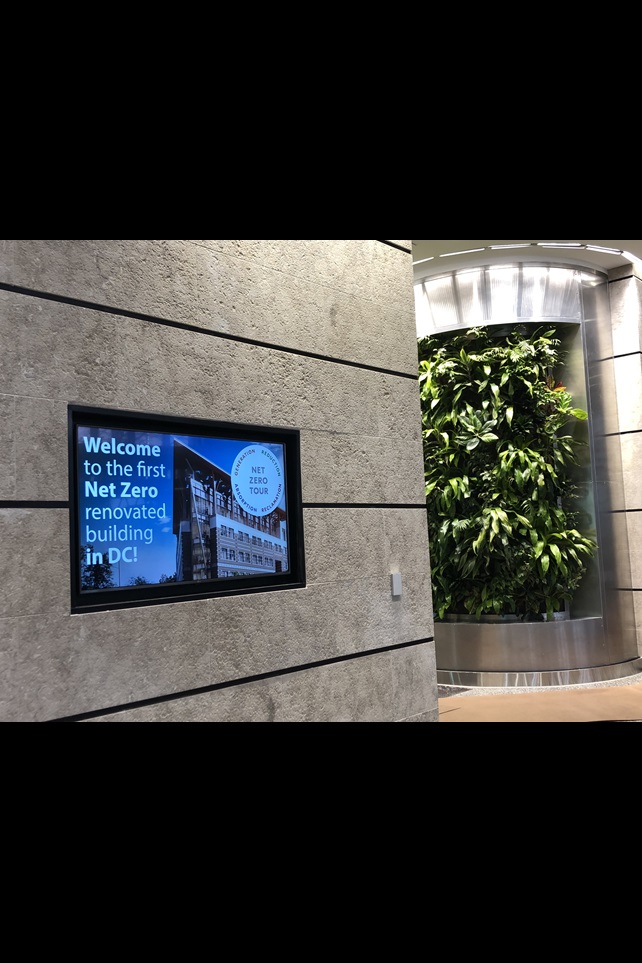
AGU Headquarters
As an organization, AGU has taken a leadership role through a number of actions, including our net zero energy renovation of our headquarters in Washington, D.C.
Net zero energy[1] means the total annual amount of energy used by a building is equal to or less than the amount of energy created onsite through innovative technologies and renewable power generation.
By achieving net zero energy, AGU’s building will reduce energy, waste, and water[2] consumption to almost zero and greatly reduce the carbon footprint, with the intent of putting excess power back on the grid.
As one of the first renovated net zero buildings in a U.S. city and since AGU’s building is on a compact urban lot, it is a model for how technologies can be combined and used to maximize efficiency.
We have endeavored to effectively use energy in every way possible, from absorbing energy from the D.C. sewer to saving embodied energy by reusing, recycling, or repurposing materials from our original building.
Here are a few examples on how we’re achieving net zero energy:
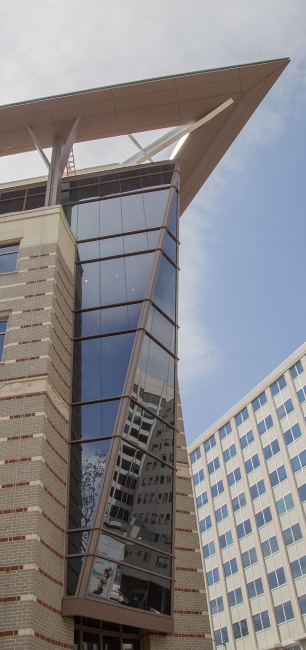
-
1
Solar photovoltaics (PV) generates direct current (DC) from power from sunlight. AGU uses the power of the sun through DC power modules to deliver low-voltage electricity directly to all lights and workstations.
When our PV generates more than we need – normally on sunny days – we receive Renewable Energy Credits for the power we contribute to the city power grid. From a regional perspective, this is important because we become contributors, not consumers, of power during peak demand hours.
-
2
Municipal sewer heat exchange system connects to the sewer line, diverts wastewater to a wet well under our plaza that then separates the sewer solids from the liquids. The liquids enter a heat exchanger in our parking area where the energy is used for the heating and cooling of the building.
-
3
Water reclamation cistern collects rainwater from the roof and any condensation from the dedicated outdoor air system. After being filtered, treated by ultraviolet light and conditioned, AGU’s building produces all the water needed for flushing toilets and irrigation.
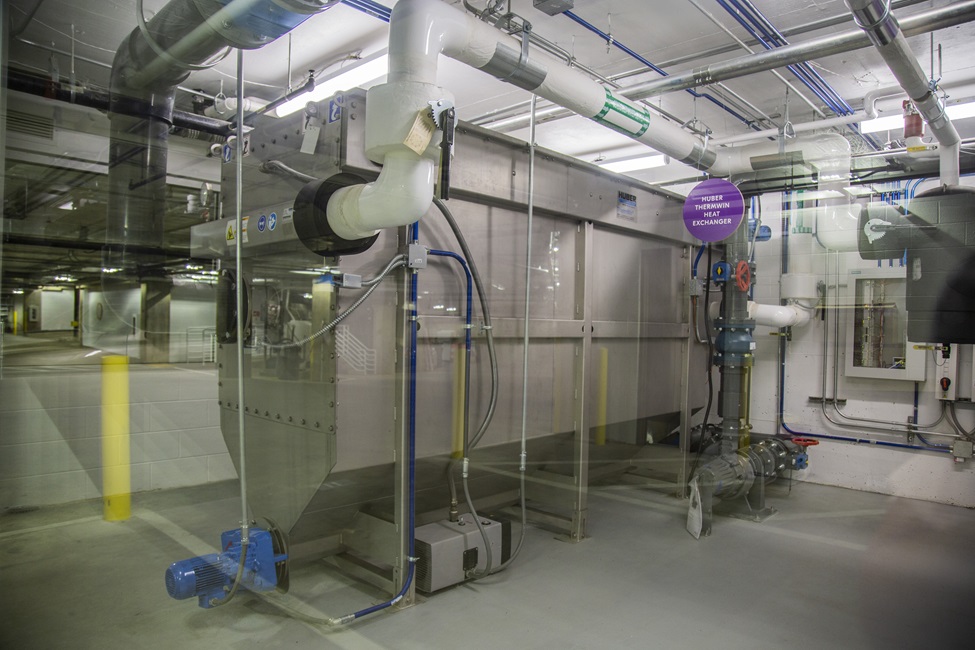
In all, AGU’s building combines 4 key engineering principles – generation, reduction, reclamation, and absorption. Within these four principles, more than 50 different strategies were individually researched and tested, with the project team ultimately selecting the key 24 strategies and 23 separate technologies that would take the AGU building to net zero energy.
For additional details on AGU’s net zero energy headquarters, please visit the website.
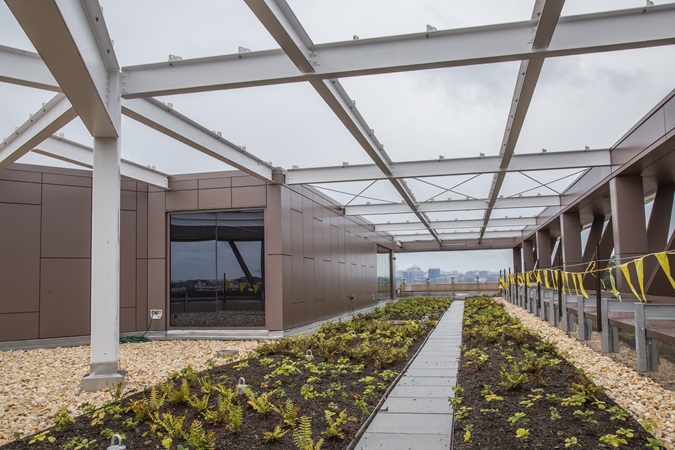
AGU Meetings
Sustainable Meetings: AGU continues to work to convene sustainable meetings. Our meeting philosophy embodies the three core elements of sustainability in that our meetings and events are: economically feasible, environmentally sound, and socially equitable. The focus of sustainability for AGU events was created in conjunction with a global Sustainability Task Force in 2020.
The task force emphasized the three principles of sustainability and encouraged AGU to apply them through gaining more equity in: synchronous/asynchronous engagement, travel impacts, affordability, and increased technology access.
AGU continues to promote additional practices to reduce the environmental impact of its events, including providing the programming schedule via app, reducing paper, using compostable cups and serve ware, vegetable-based containers for foodstuffs; deploying the most sustainable choices for carpet and other building supplies on-site; and encouraging attendees and staff to use public transportation or walk to events.
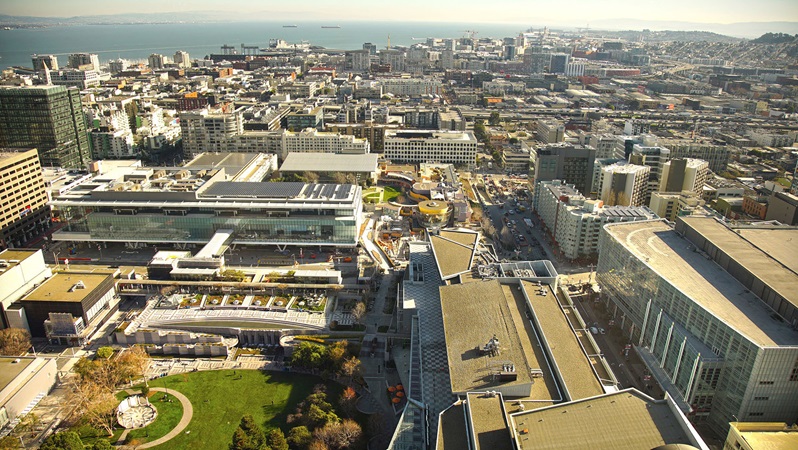
AGU Annual Meeting
Sharing of posters and presentations virtually: AGU’s annual meeting is the largest gathering that takes place each December in a select U.S. city and online everywhere. Rotating the annual meeting across the U.S. and creating a truly hybrid meeting experience has allowed for broader local and regional participation than before and increased opportunities for a global audience, expanding participation and reducing overall travel.
Since 2011, this annual meeting has offered free on-demand or streaming sessions so that scientists and anyone interested in Earth and space science worldwide could engage, learn and share important sessions from the meeting. In 2021 we embraced a fully hybrid model, expanding the content available for streaming, and in 2022 all plenaries, hybrid oral sessions, online poster discussion sessions, town halls, innovations, the Honors ceremony and networking opportunities are available to virtual attendees.
AGU has helped develop the ESS Open Archive, a preprint server established to accelerate the open discovery and dissemination of Earth, environmental, and space science research by archiving and sharing early research outputs, including preprints, presentations from major scientific meetings, and important documents of scholarly societies. We strongly encourage poster presenters from the annual meeting to upload their posters to the archive so that their science can be shared worldwide.
AGU23 will take place in San Francisco, CA; one of the greenest cities in North America. Sustainability and developing innovative environmental initiatives are a significant piece of the policies of the city of San Francisco. Sustainable City is a dedicated initiative to achieve the long-term sustainability of San Francisco’s built and natural environment. It includes city-wide and neighborhood-scale efforts addressing classically environmental sustainability categories: climate protection, energy, water, waste and materials, air quality, ecology and resilience.
The George R. Moscone Convention Center in San Francisco is at the forefront of green meetings through their implementation of energy-saving practices, use of renewable energy sources, recycling and composting initiatives. Additional information about its practices are available on the Moscone Center website.

[1] AGU follows the New Building Institute definition of net zero energy.
[2] Due to stringent federal and local water regulations, this project cannot pursue net zero water strategies although the proper technology for on-site potable water treatment now exists.

